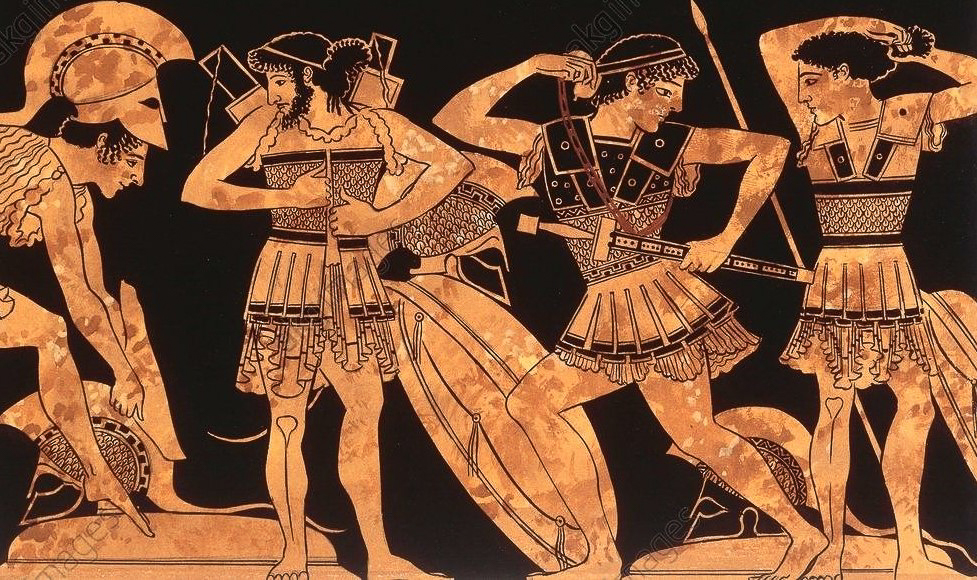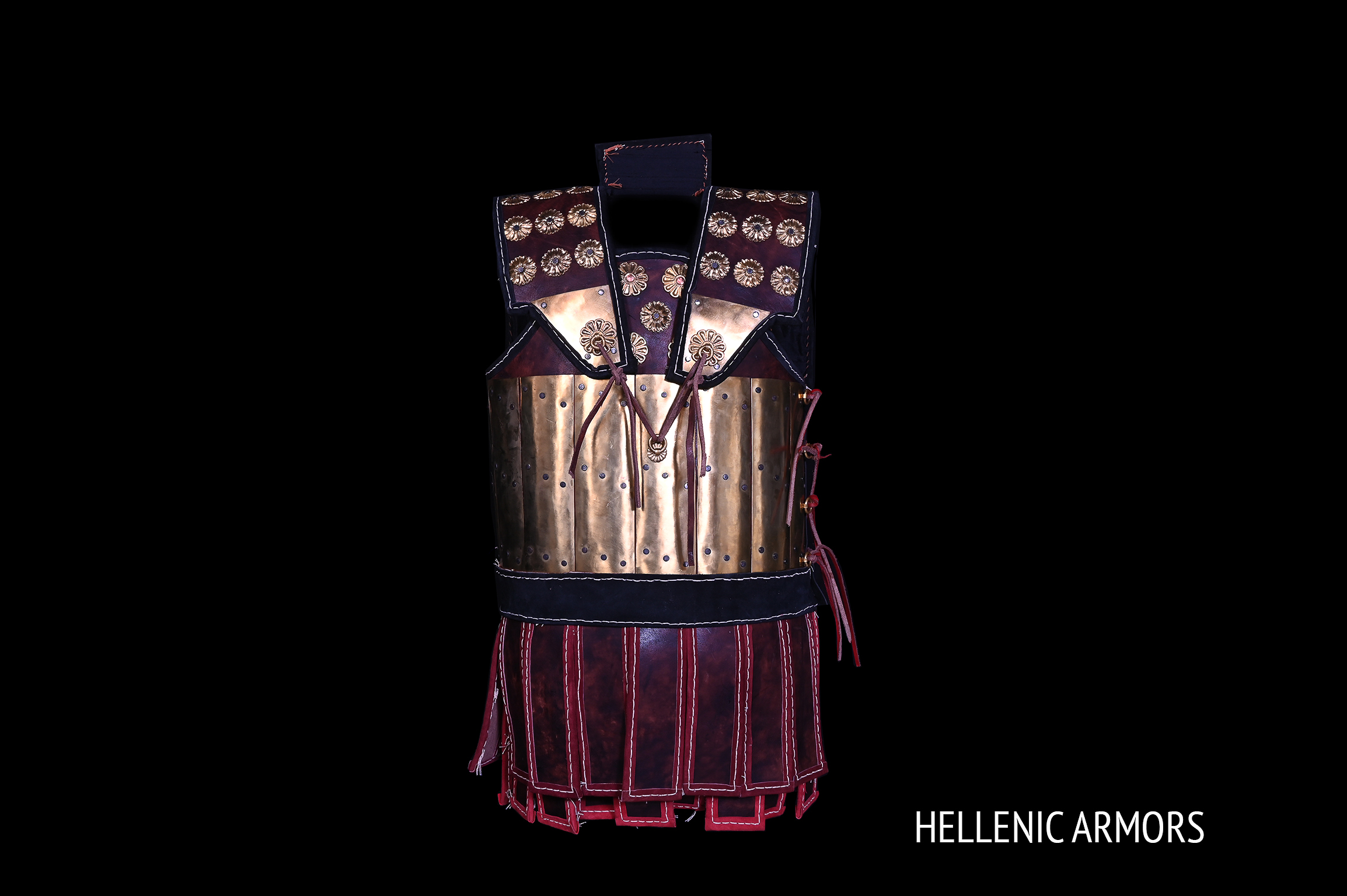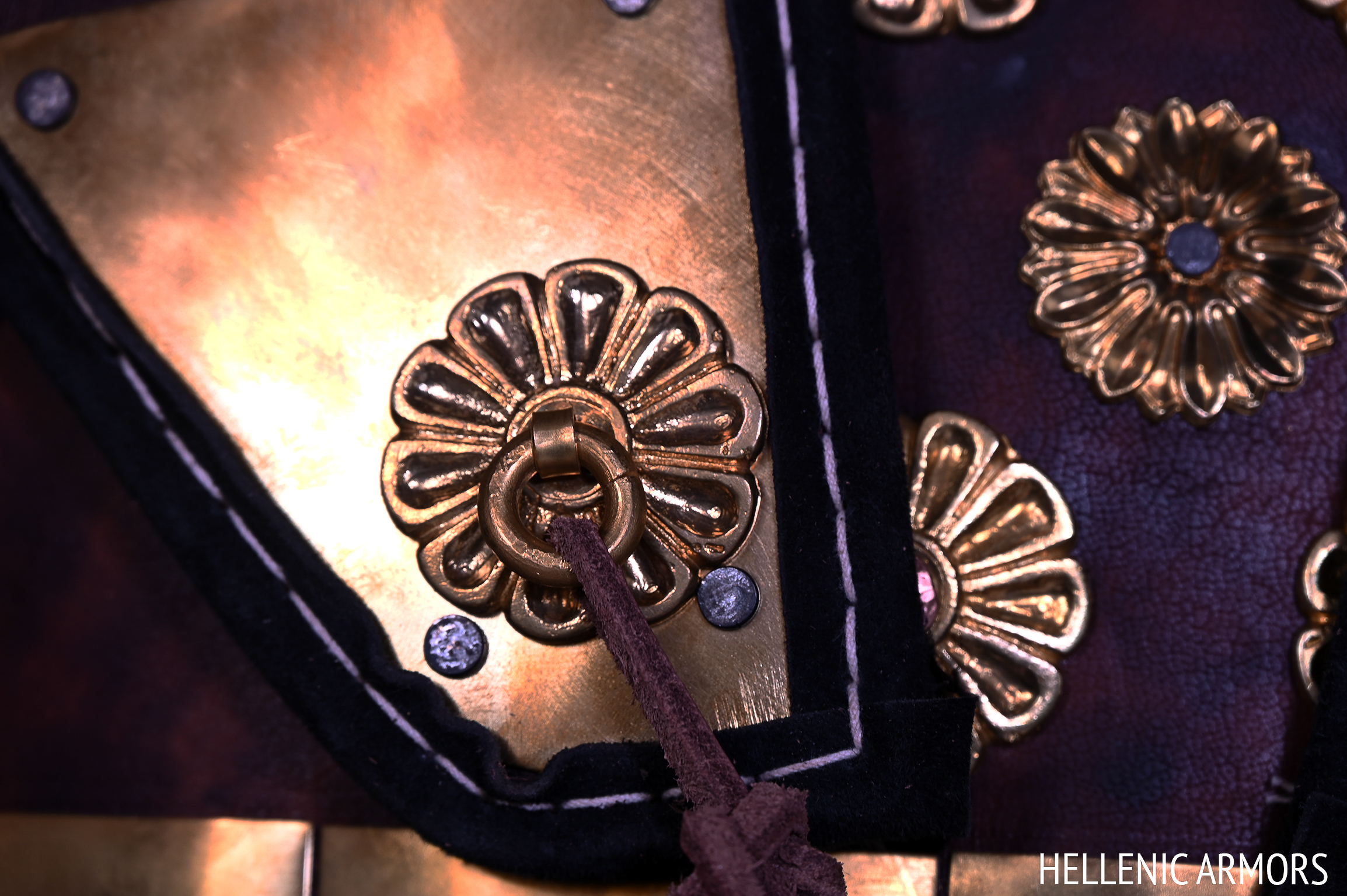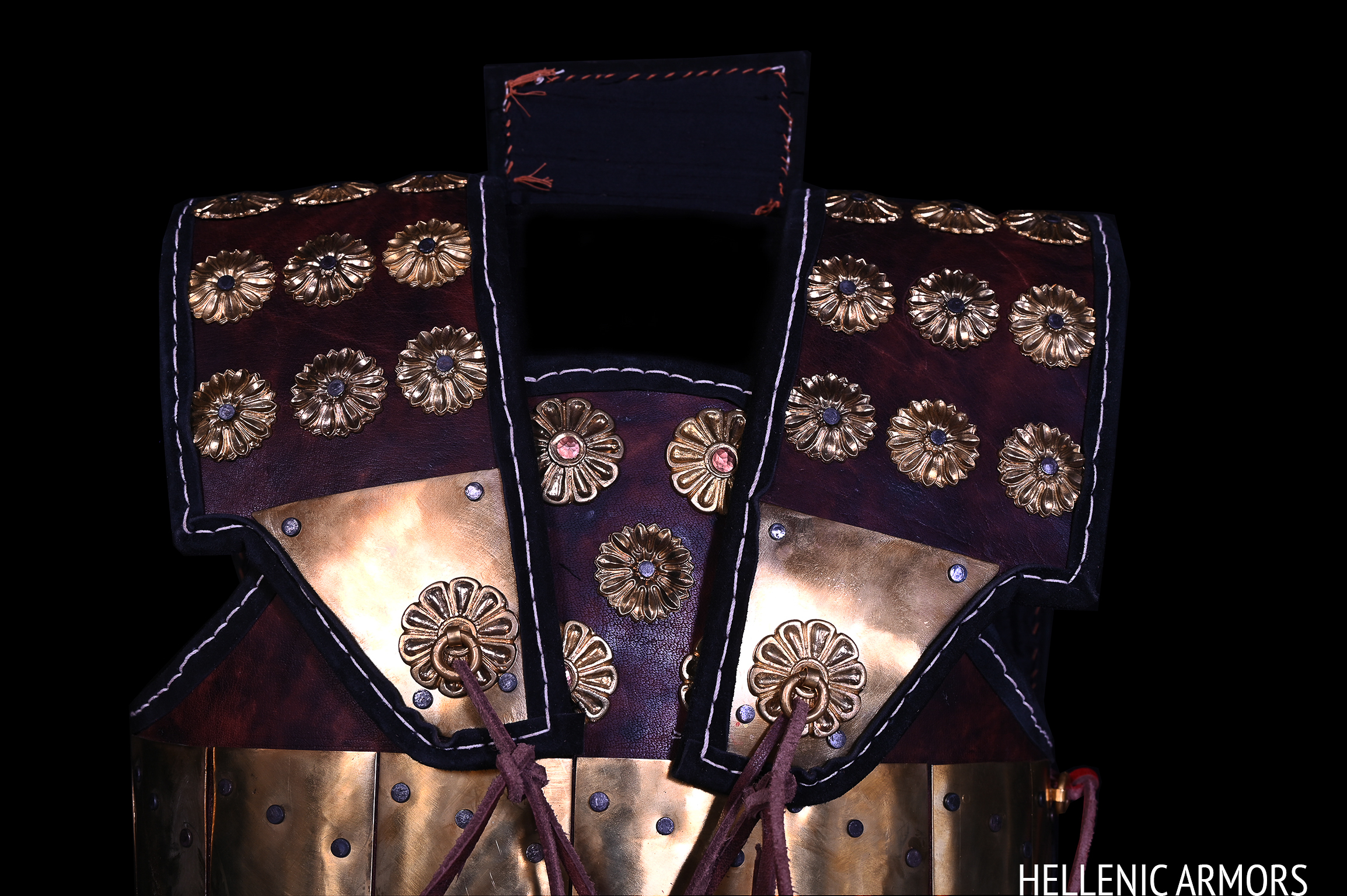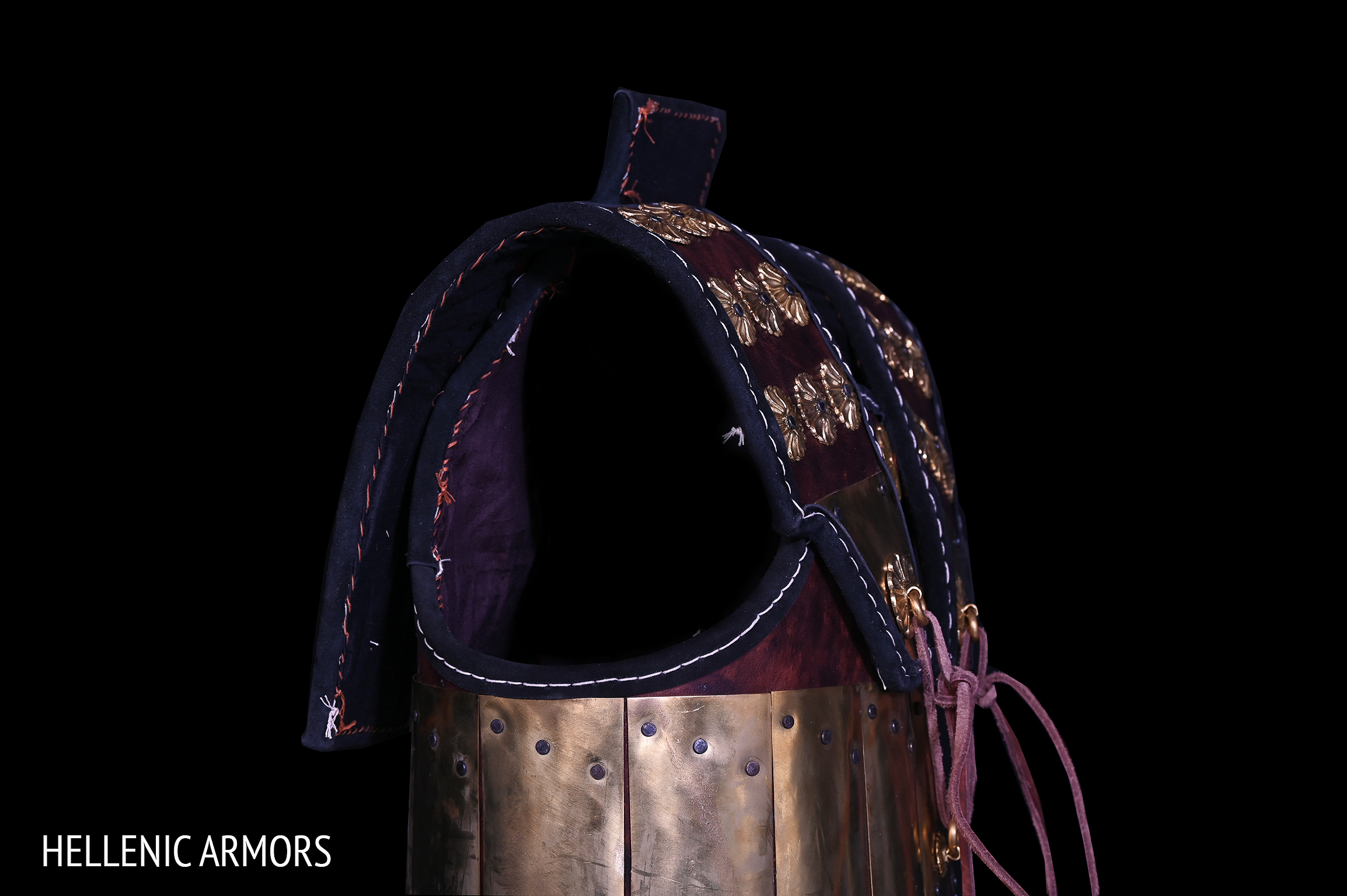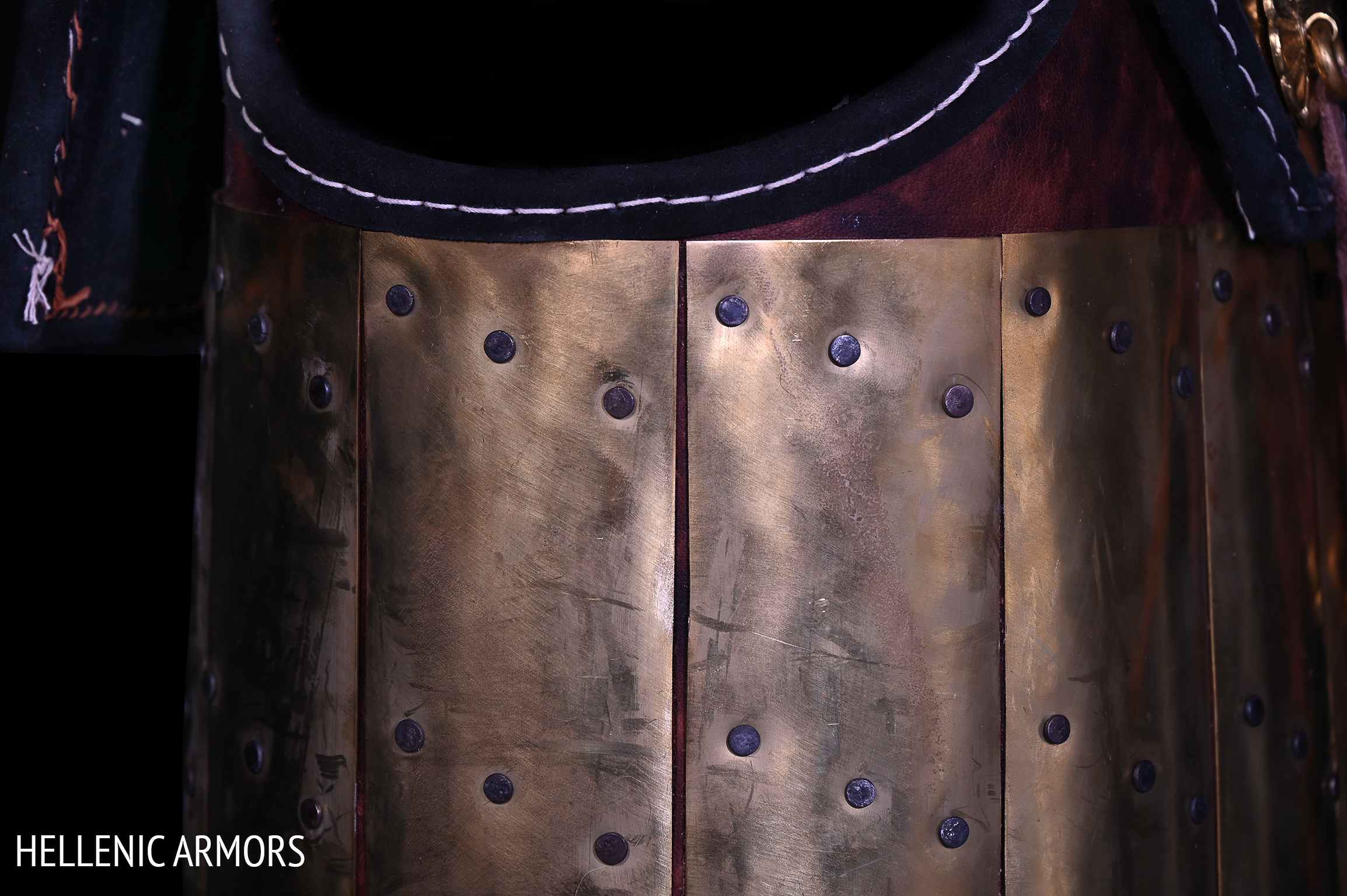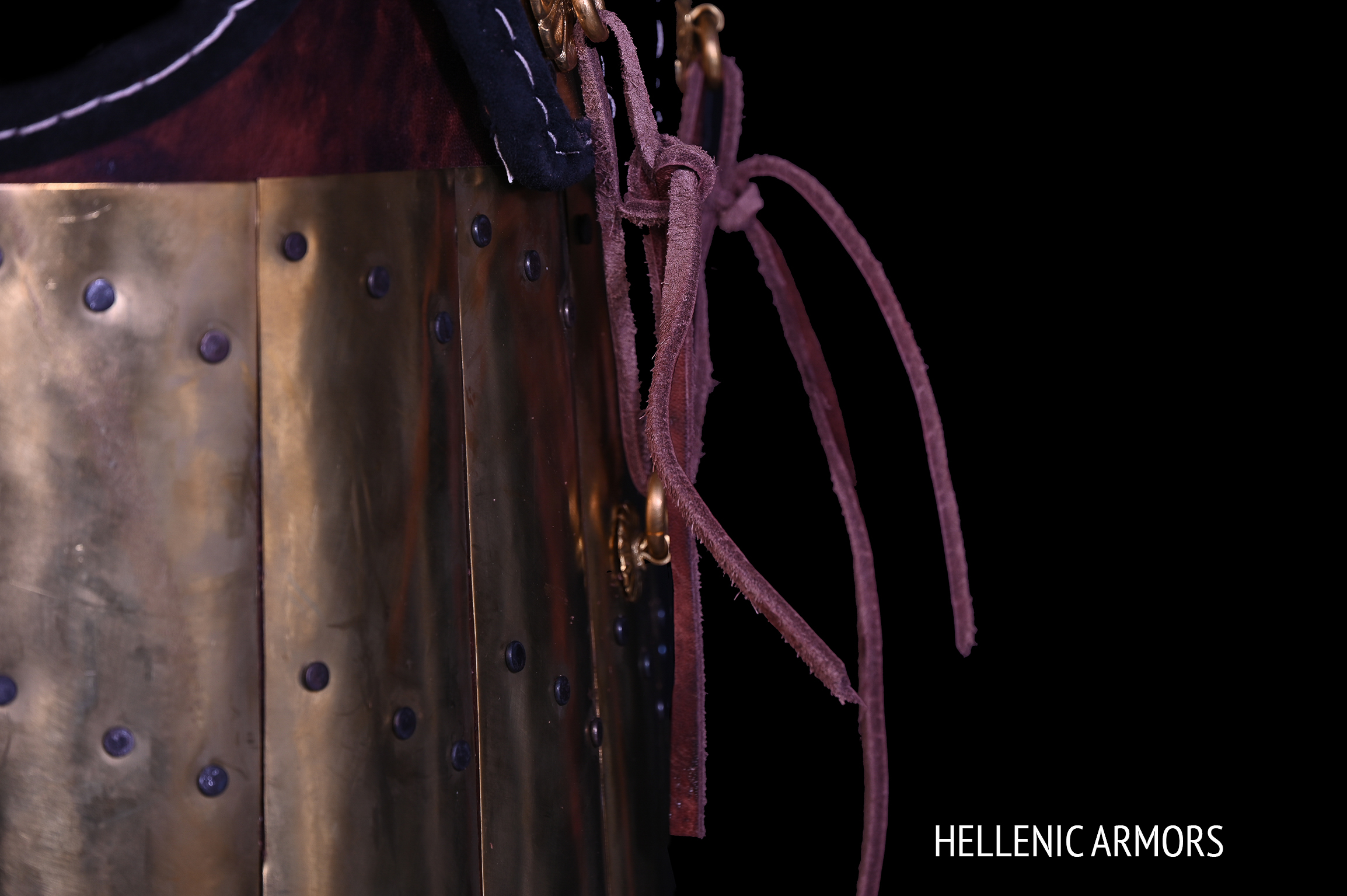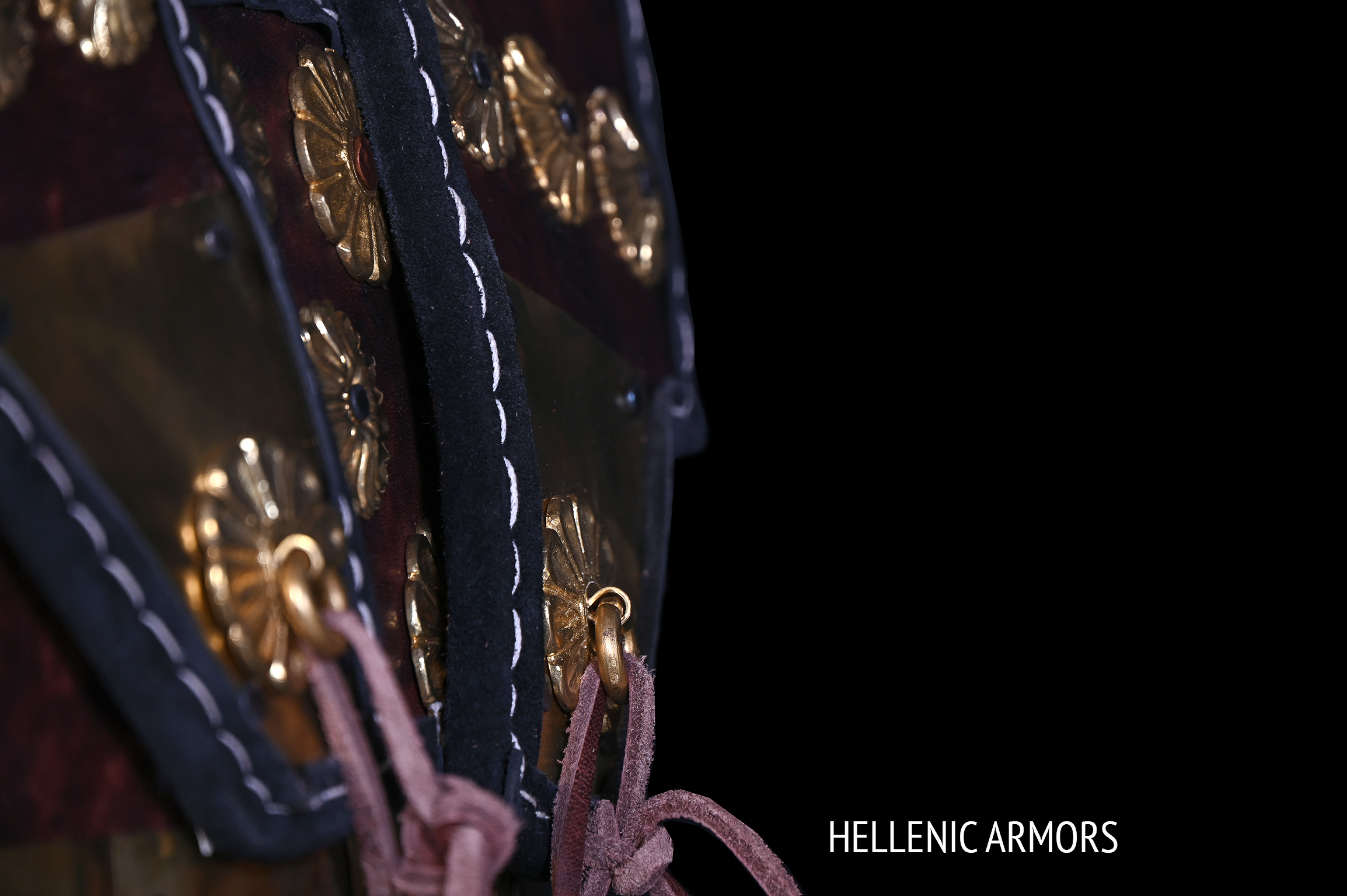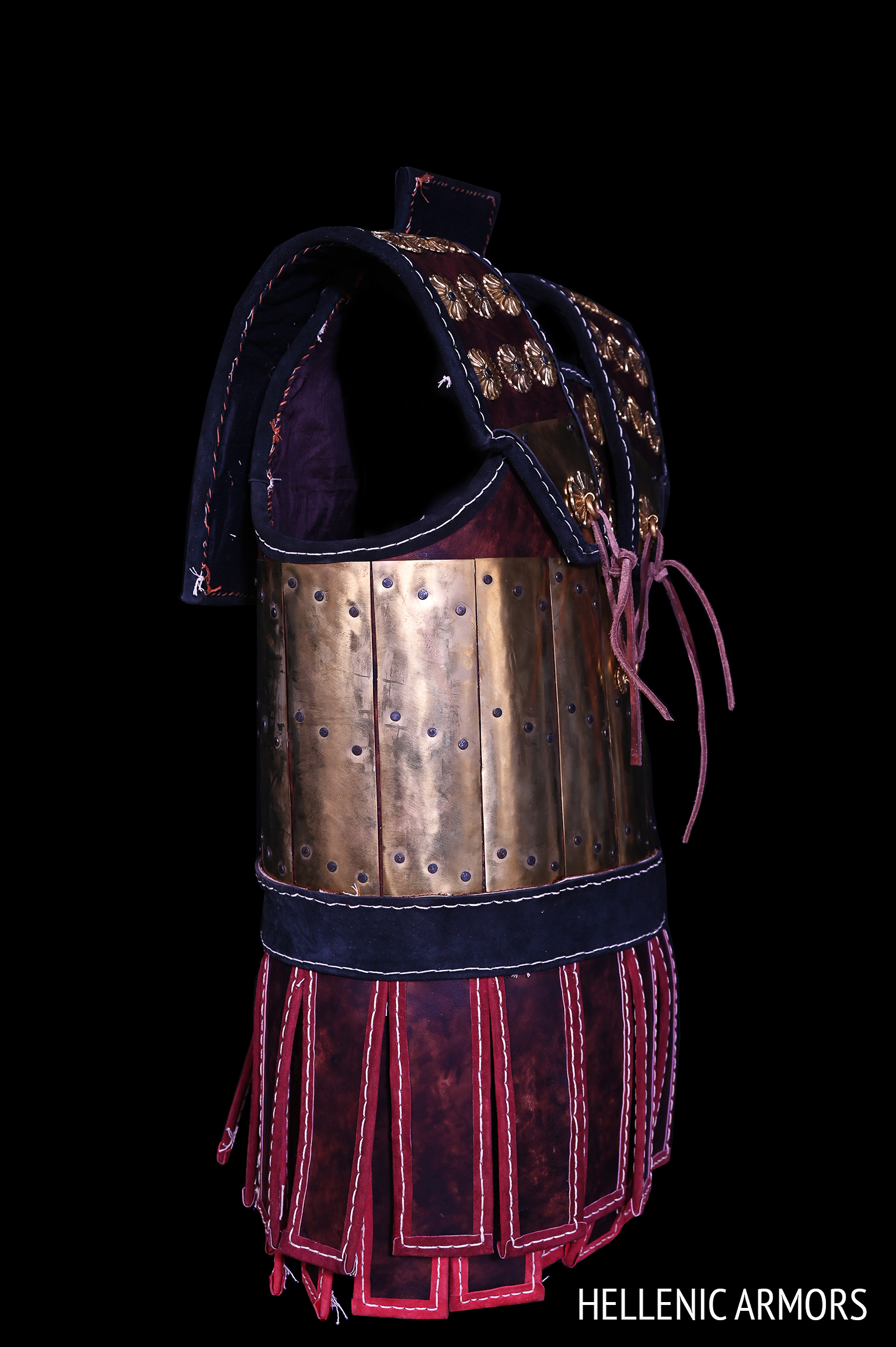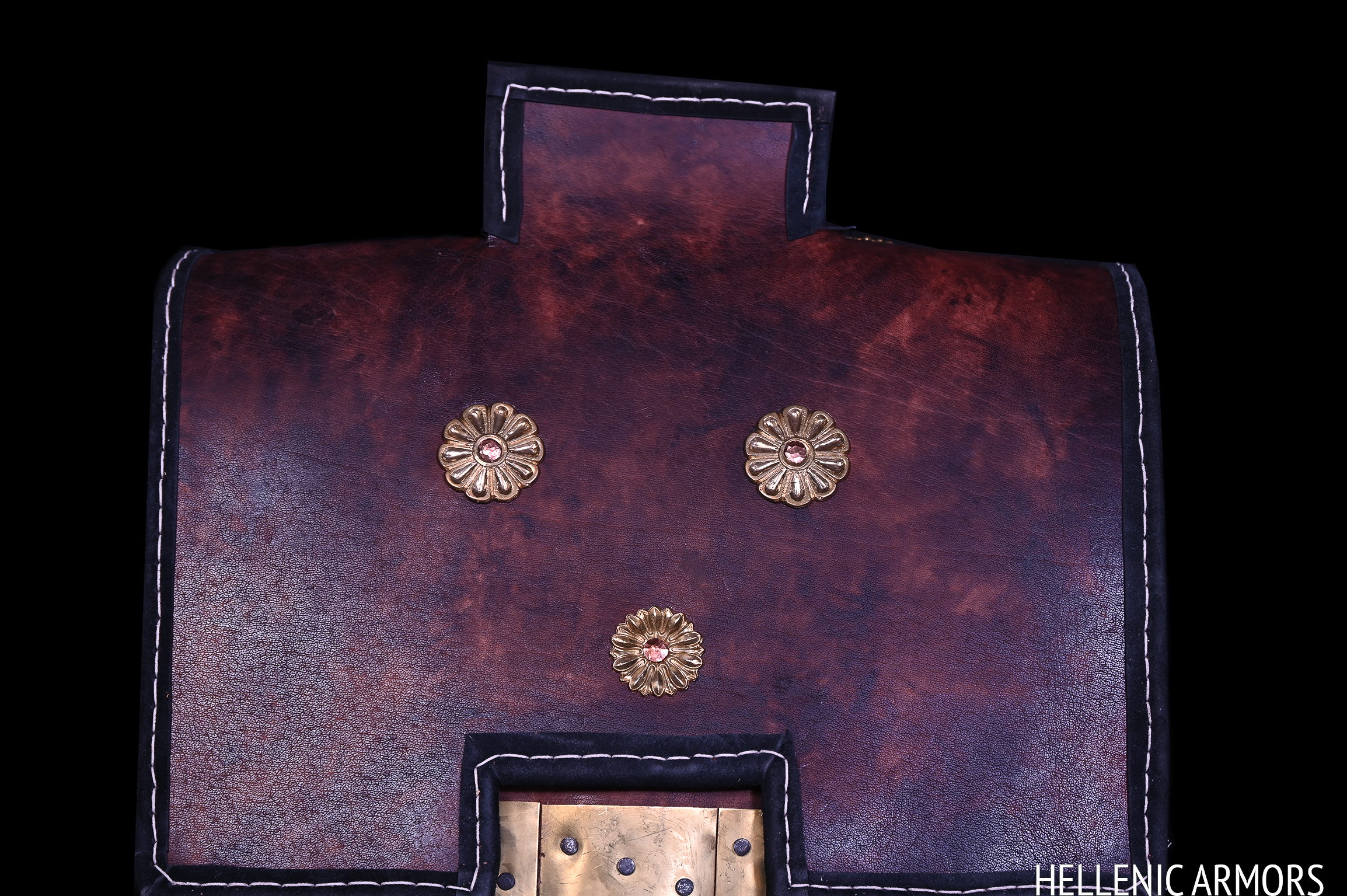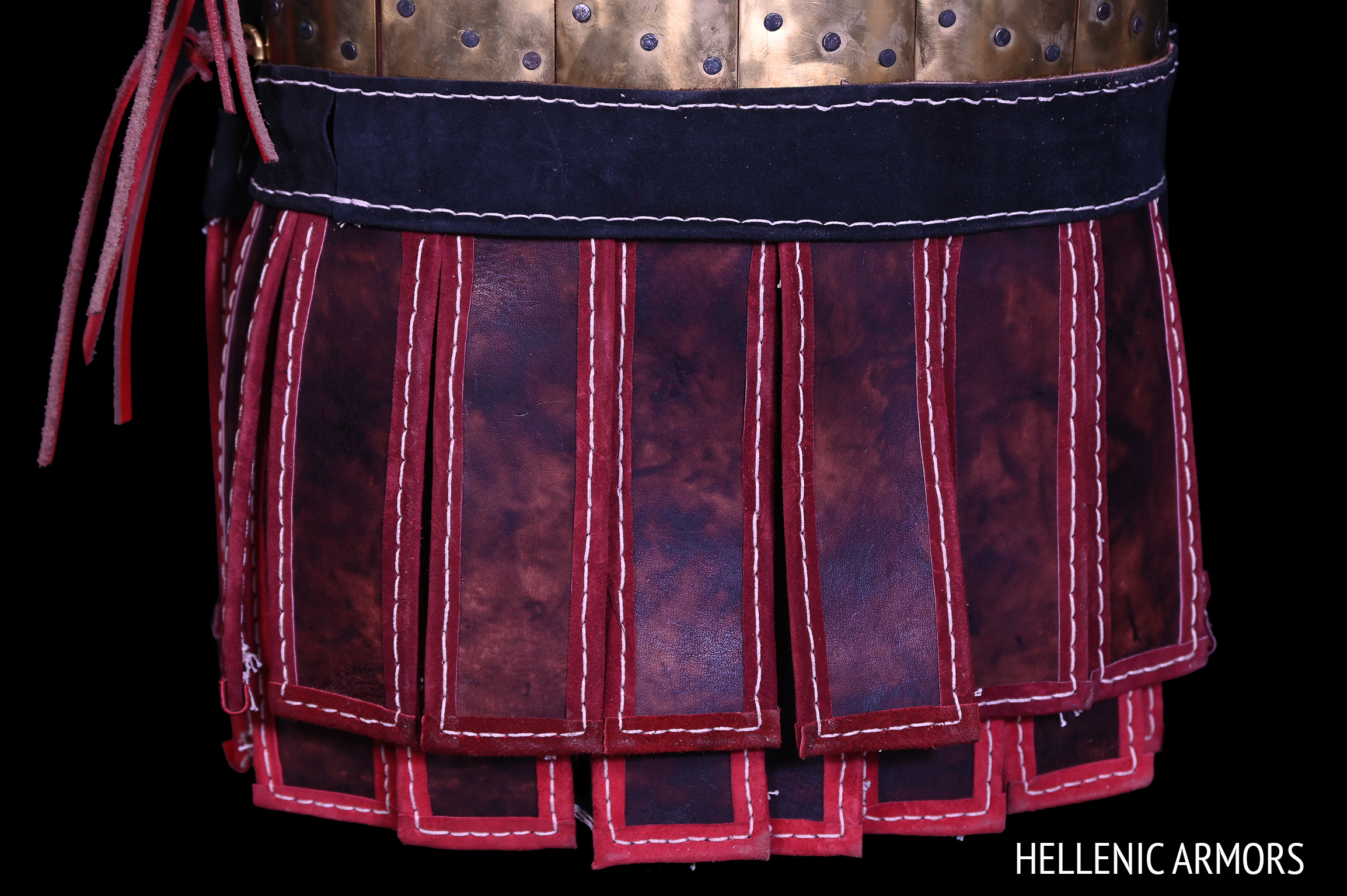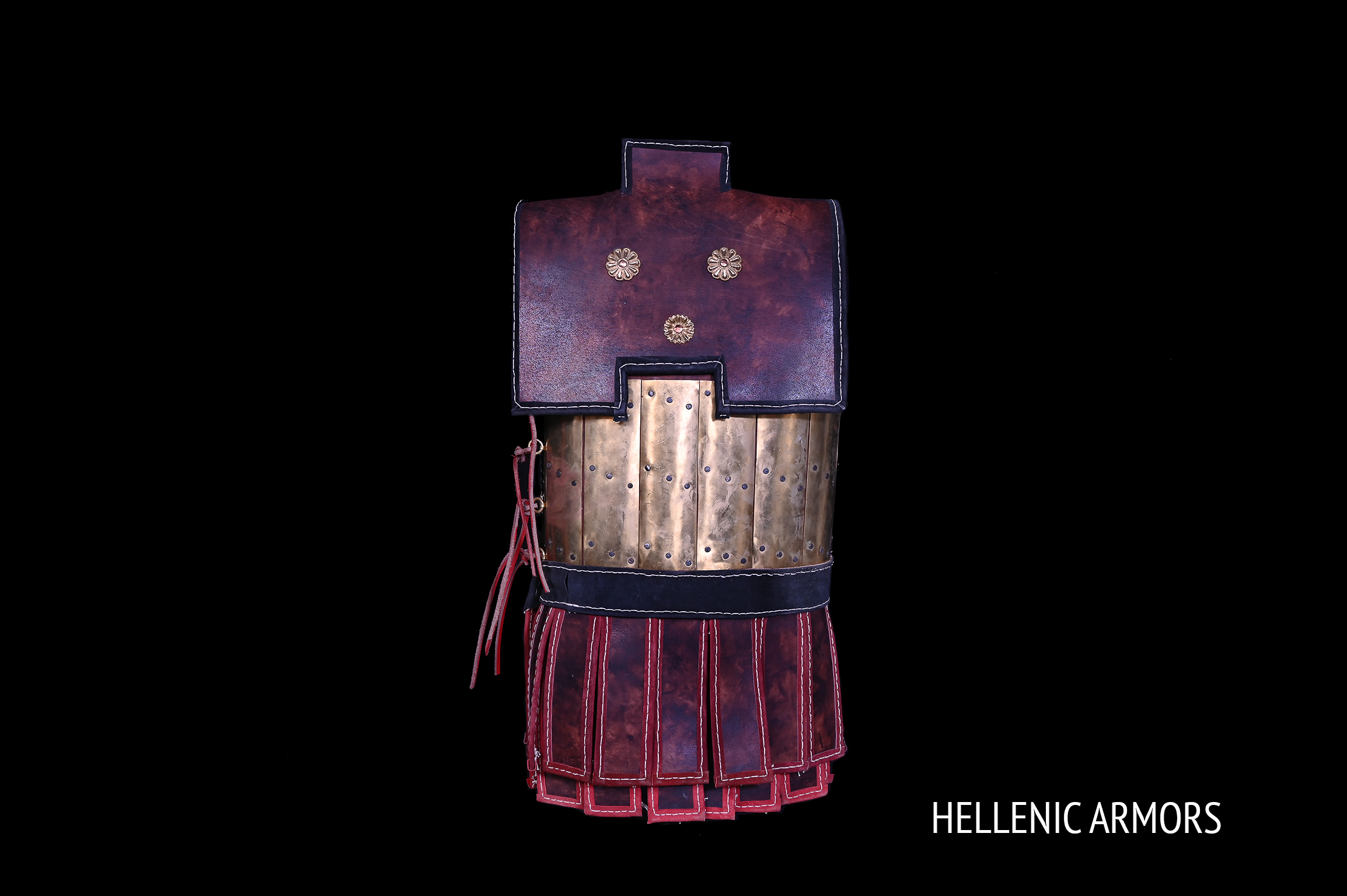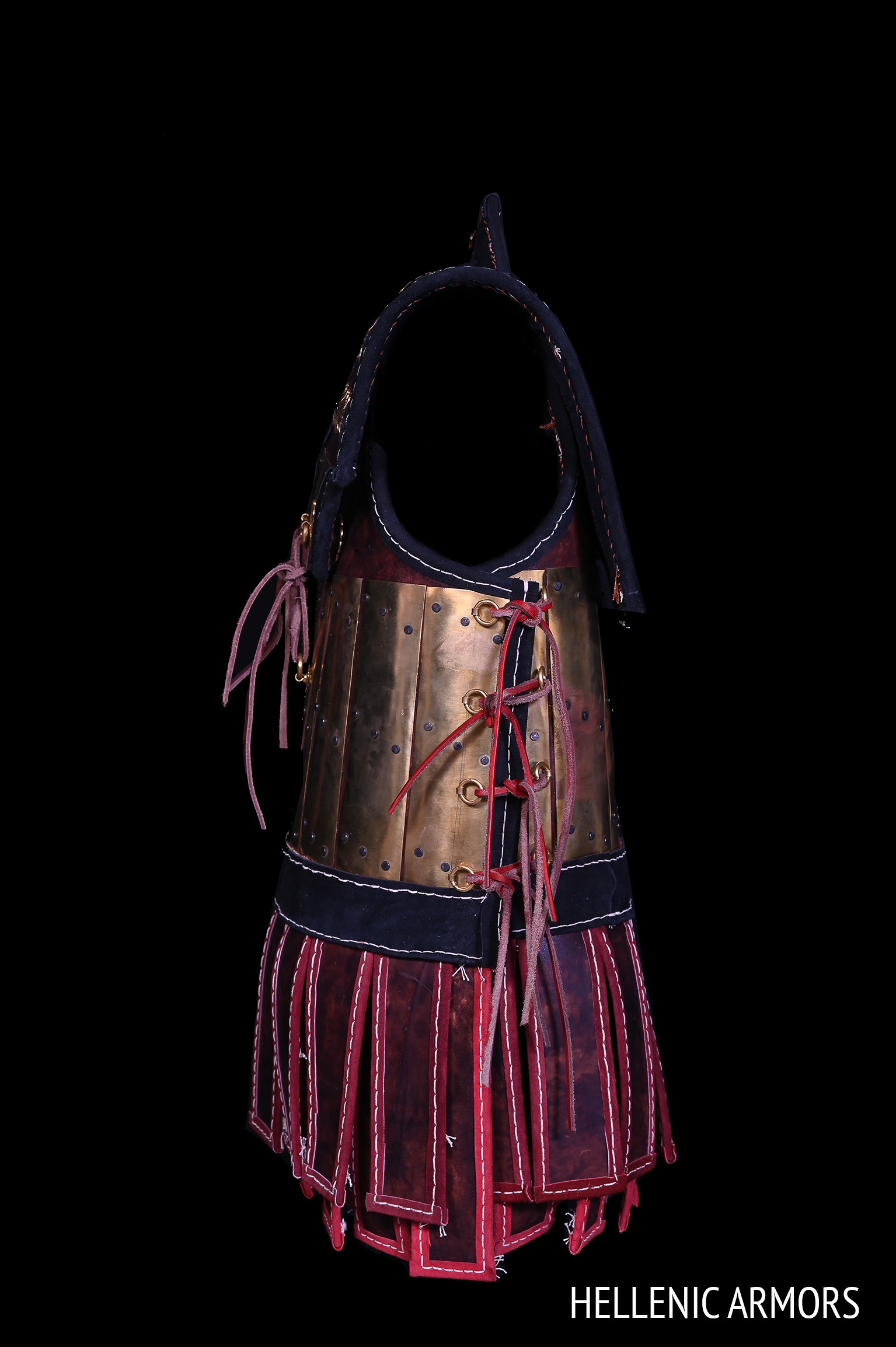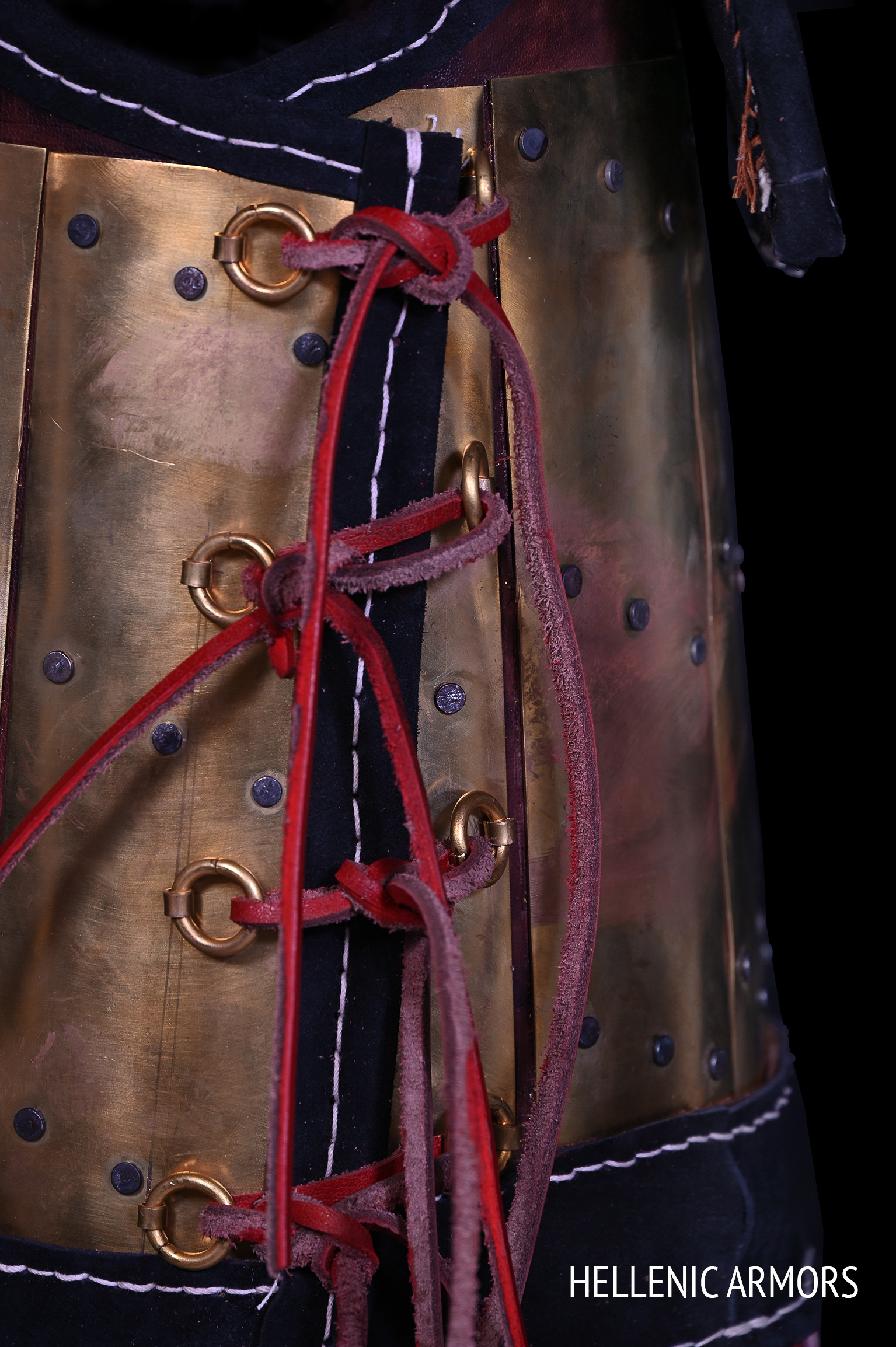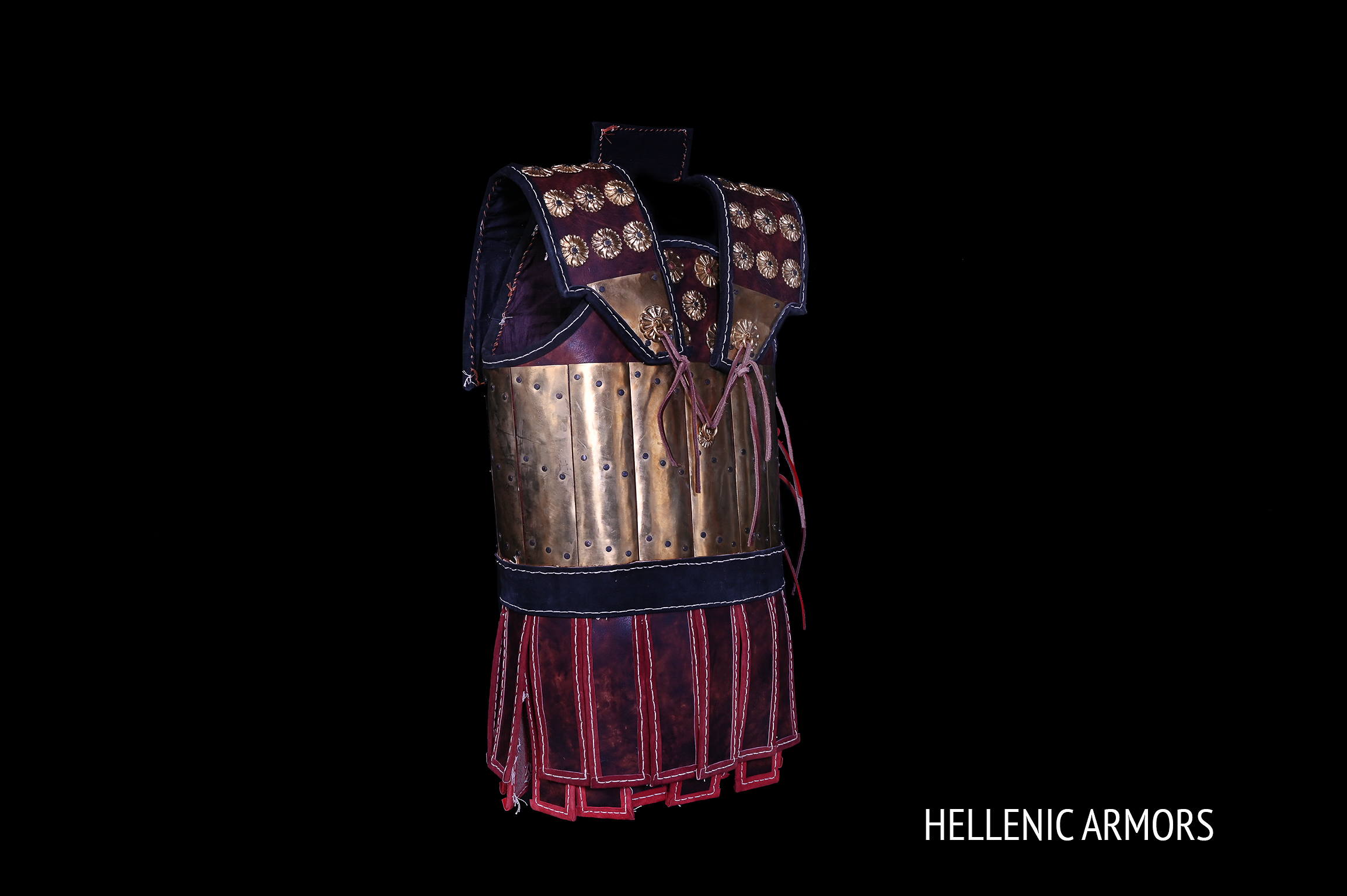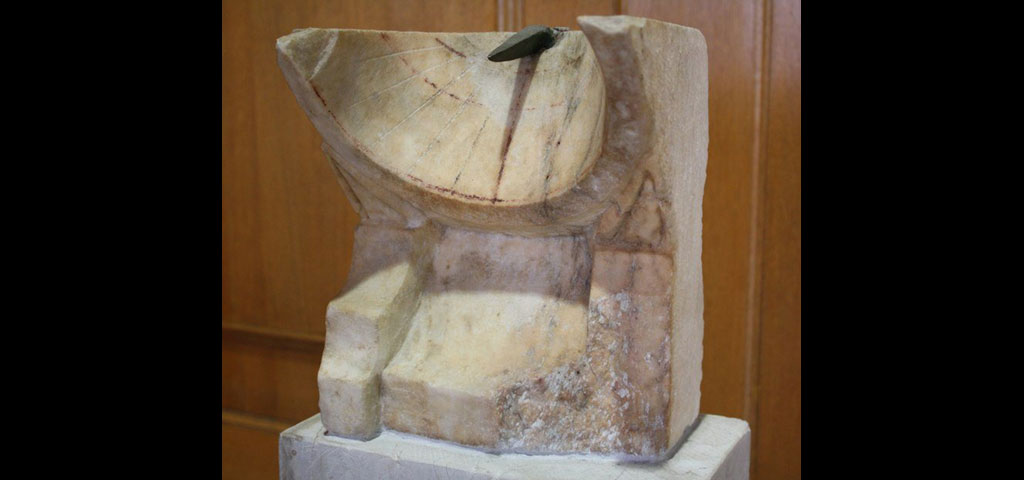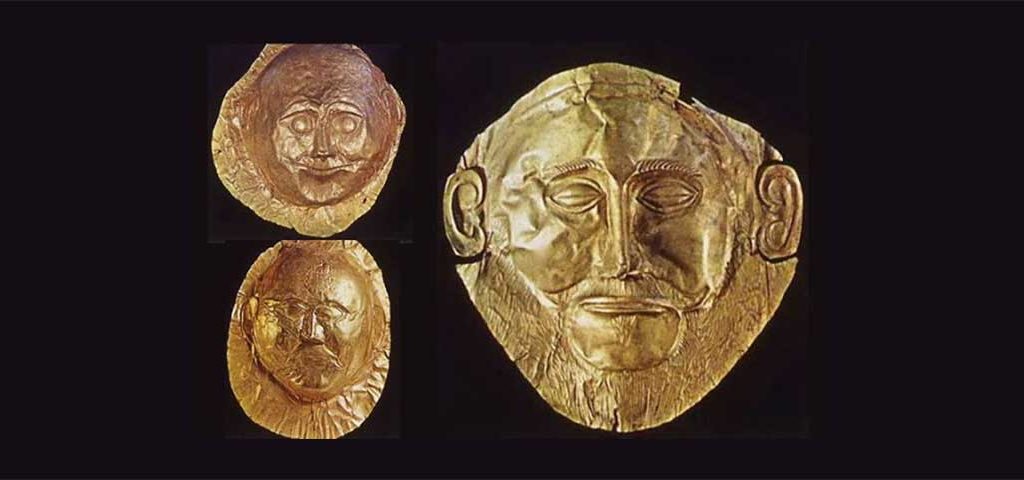Ancient Greek Armors
“Paris“ leather thorax
5th century BC
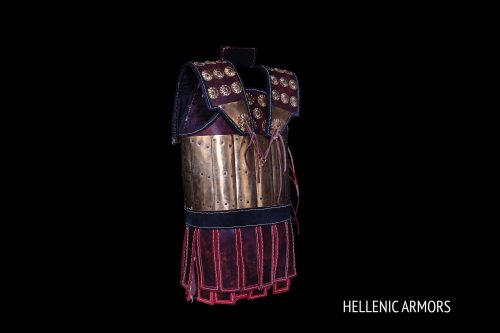
The recreation it has been based on two red figure paint depictions.
The torso and “pteryges” rely on the work of “Eretrian Painter” (425-400 BC), a skillful Greek Attic red-figure vase painter.The particular red figure vase (Red-faced “Kantharus”) depicting an hoplite of his era wearing a composite thorax is being displayed at Museo Pomarici Santomaci (Gravina in Puglia).Paris, the mythological hero of Trojan war,depicted as Classical period hoplite girds his armor under the supervision of Apollo.
The painting shows very clearly a) the vertical rectangular plates placed in a parallel arrangement which cover the human torso. Also visible are the heads of the rivets that attach them to the organic substrate (leather or linen) b) The double row of wings for upper thighs protection.
The “epomides” (shoulder guards) have been based on depicted figures of an Athenian Kylix (red figure pottery, 5th century BC) which currently is being displayed in Vienna [Museum Kunsthistorisches Museum , Vienna 9(Inv. No. 3694)Attributed :Douris painter ]. The painting captures the preparation of the Hoplites shortly before the start of the battle.
Someone can notice the upper chest area and “epomides” of the Linothorax’s hoplite (the second from the right side) bears some kind of round patches which probably concern metal reinforcements. These reinforcements are being interpreted as bronze flora circular decorative elements.
The fastening mechanism includes six pairs of rings, two pairs on the breast area connected the epomides with the torso and the rest four pairs lying underneath the right armpit.The major difference in comparison with the well-known “Linothorax” typology is the replacement of the usual textile material with a leather one.


